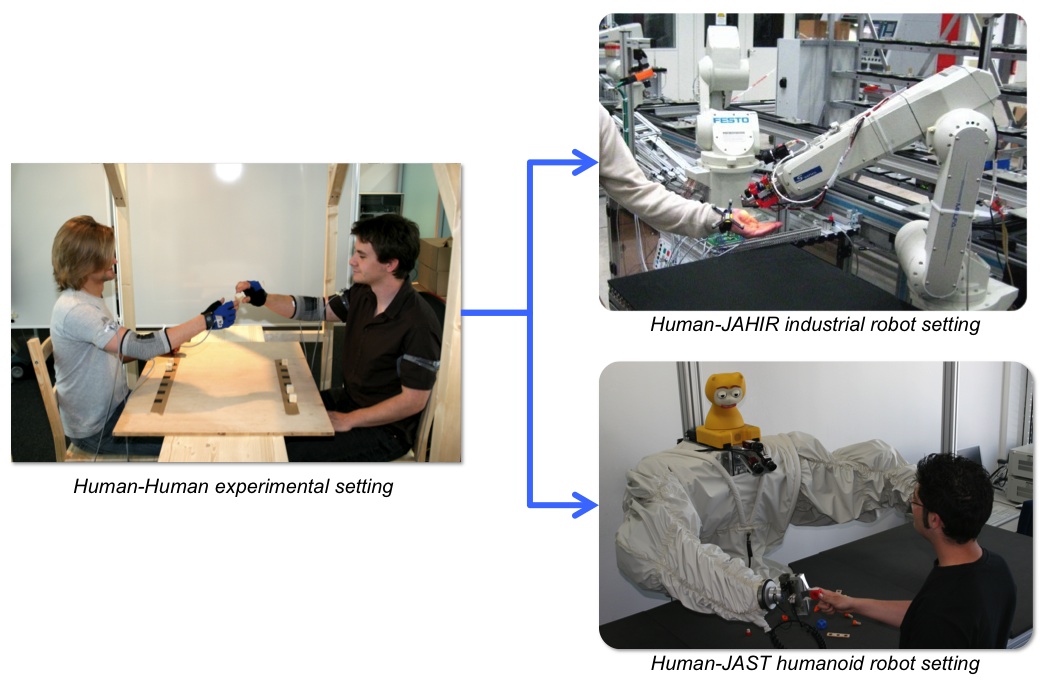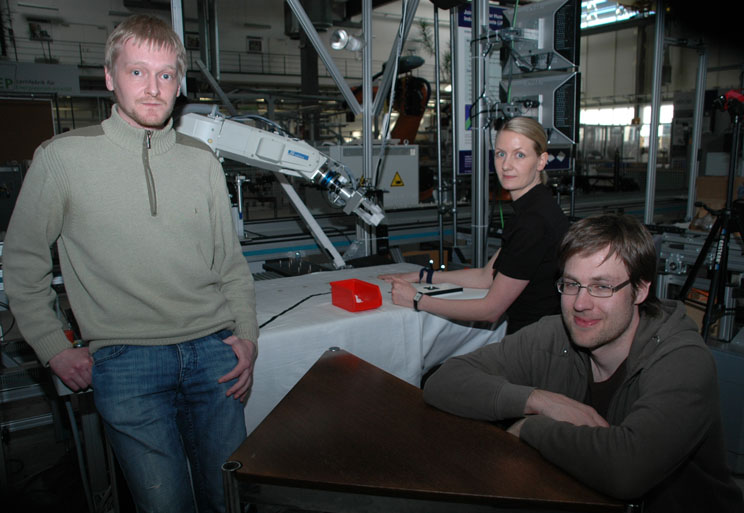|
[1]
|
Markus Huber, Aleksandra Kupferberg, Claus Lenz, Alois Knoll, Thomas Brandt,
and Stefan Glasauer.
Spatiotemporal movement planning and rapid adaptation for manual
interaction.
PLoS ONE, 8(5):e64982, 2013.
[ DOI |
.bib |
.pdf ]
|
|
[2]
|
Aleksandra Kupferberg, Stefan Glasauer, Markus Huber, Markus Rickert, Alois
Knoll, and Thomas Brandt.
Biological movement increases acceptance of humanoid robots as human
partners in motor interaction.
AI & Society, 26(4):339-345, 2011.
[ DOI |
.bib |
.pdf ]
|
|
[3]
|
Markus Huber, Alois Knoll, Thomas Brandt, and Stefan Glasauer.
When to assist? modelling human behaviour for hybrid assembly
systems.
In ISR - ROBOTIK 2010, Munich, Germany, 2010.
[ .bib |
.pdf ]
|
|
[4]
|
Markus Huber, Helmuth Radrich, Cornelia Wendt, Markus Rickert, Alois Knoll,
Thomas Brandt, and Stefan Glasauer.
Evaluation of a novel biologically inspired trajectory generator in
human-robot interaction.
In Proceedings of the IEEE International Symposium on Robot
and Human Interactive Communication, pages 639-644, Toyama, Japan, 2009.
[ DOI |
.bib |
.pdf ]
|
|
[5]
|
Aleksandra Kupferberg, Stefan Glasauer, Markus Huber, Markus Rickert, Alois
Knoll, and Thomas Brandt.
Video observation of humanoid robot movements elicits motor
interference.
In Proceedings of the Symposium on New Frontiers in Human-Robot
Interaction, Adaptive and Emergent Behaviour and Complex Systems Convention,
pages 81-85, Edinburgh, Scotland, 2009.
[ .bib |
.pdf ]
|
|
[6]
|
Markus Huber, Markus Rickert, Alois Knoll, Thomas Brandt, and Stefan Glasauer.
Human-robot interaction in handing-over tasks.
In Proceedings of the IEEE International Symposium on Robot
and Human Interactive Communication, pages 107-112, Munich, Germany, August
2008.
[ DOI |
.bib |
.pdf ]
|
|
[7]
|
Stefan Glasauer, Markus Huber, Alois Knoll, and Thomas Brandt.
Handing over: Anticipation in joint action.
International Journal of Psychology, 43(3-4), 2008.
[ .bib |
.pdf ]
|
|
[8]
|
Markus Huber, Claus Lenz, Markus Rickert, Alois Knoll, Thomas Brandt, and
Stefan Glasauer.
Human preferences in industrial human-robot interactions.
In Proceedings of the International Workshop on Cognition for
Technical Systems, Munich, Germany, 2008.
[ .bib |
.pdf ]
|
|
[9]
|
Markus Huber, Alois Knoll, Thomas Brandt, and Stefan Glasauer.
Handing-over a cube: spatial features of physical joint action.
Annals of the New York Academy of Sciences, 1431:380-382,
2008.
[ DOI |
.bib |
.pdf ]
|

